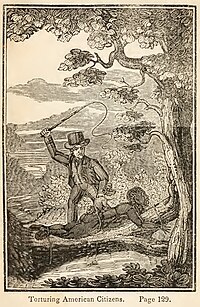
Photo from wikipedia
The reader is left wanting to see the comparison drawn out further. The result is that references to the 1822 uprising feel somewhat tacked on in order to make certain… Click to show full abstract
The reader is left wanting to see the comparison drawn out further. The result is that references to the 1822 uprising feel somewhat tacked on in order to make certain essays relevant to the volume, whereas their purpose is to demonstrate longer and interconnected legacies of resistance across time and place. Another reason to read the essays together is that the anthology lets interpretation of evidence that conflicts between authors stand with no explanation or contextualization of the differences, leaving the reader to critically compare accounts and derive their own conclusions. Sometimes these conflicting interpretations of a single detail can lead to vastly different takes on the uprising. For example, Bernard Powers claims Vesey may have been born on St. Thomas, and that his proximity to (and subsequent brief residence in) Haiti enabled him to make contacts with Haiti’s Black residents and absorb revolutionary values; in contrast, Spady asserts Vesey may have been Kormantse, hailing from the Ghanaian coast or further inland, and thus drew uponWest African politics and culture in his articulation and organization of collective rebellion. Spady cites evidence that Vesey was then taken to the Caribbean as a teenager and purchased by Joseph Vesey in St. Thomas before briefly residing in Haiti, then Charleston. Powers gives heavy weight to the Haitian influence on the 1822 uprising; Spady names it as one among many influences that might have inspired a few resistors. Readers are left to discern what to take from these interpretations. The editor or authors could have noted such contradictions by referencing the murky and fragmented nature of the archives, as Robert Paquette’s essay does, to demonstrate that the available evidence points to either of these birthplaces. In all, Fugitive Movements is a timely and necessary collection that adeptly interweaves historical scholarship and memory studies to advance understanding of the long legacy of Black resistance evident in the 1822 uprising and the Black freedom struggles that have endured to this day.
Journal Title: American Nineteenth Century History
Year Published: 2022
Link to full text (if available)
Share on Social Media: Sign Up to like & get
recommendations!